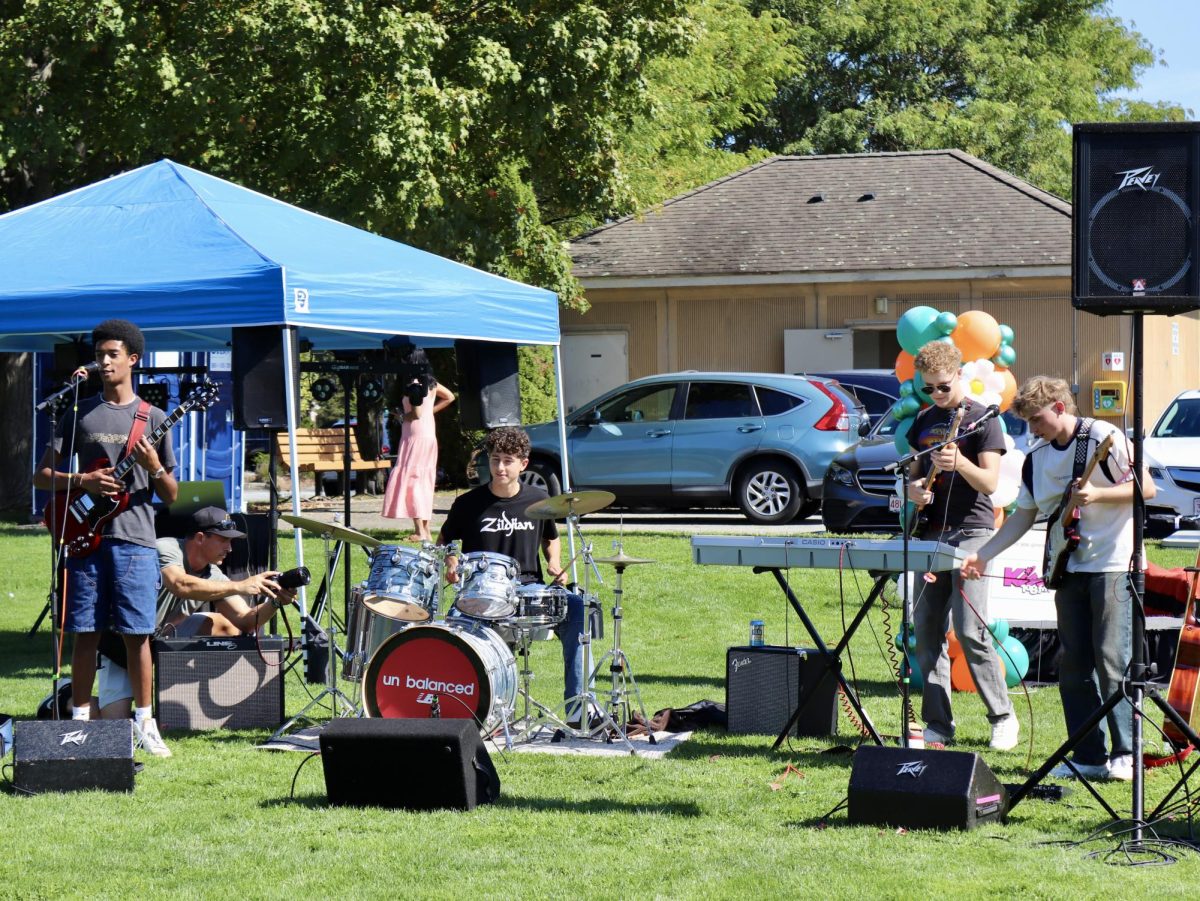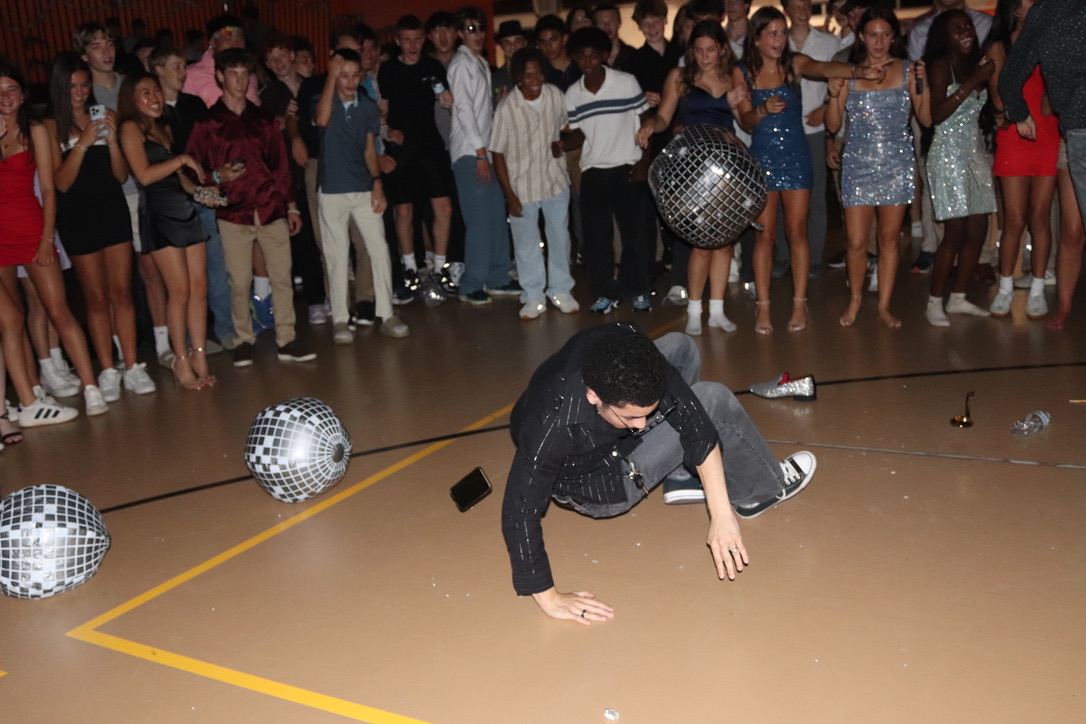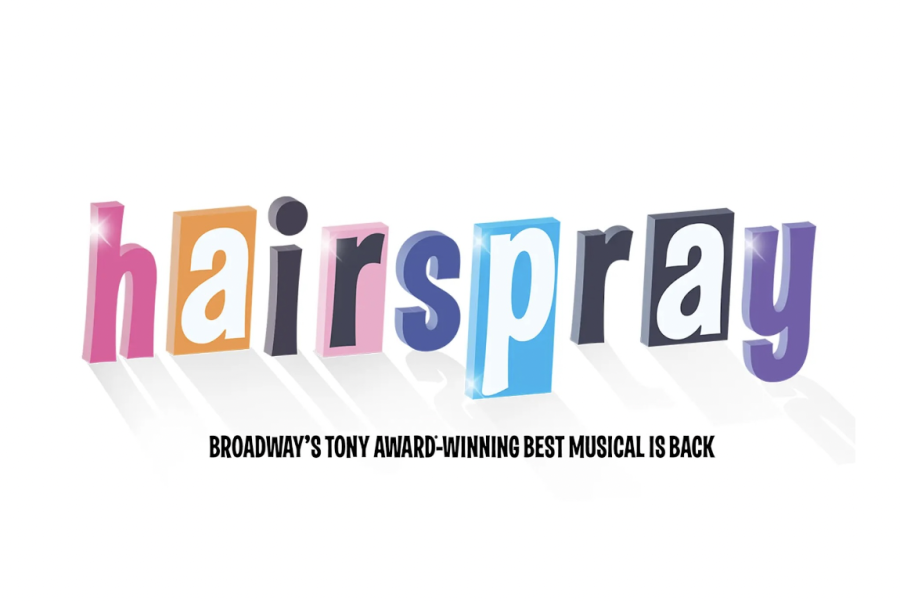Musical Review: “Hairspray”
Credit: hairspraytour.com
Join co-features editor, Kally Proctor in a review of the musical, Hairspray.
November 25, 2022
Warning: this review contains spoilers for the musical, “Hairspray.”
The curtains rise, and the spotlight focuses on a teenage girl. As the girl starts singing in a cheerful, candy-sweet voice, two things immediately stand out: how bright and pink everything on stage is and the shocking resemblance between the scene and your typical preteen girl’s bedroom.
The Broadway musical, “Hairspray” recently visited the Citizens Bank Opera House in Boston for two weeks. Some may think that “Hairspray,” set in the early 1960s, is just a whimsical musical about an overweight teenage girl who makes it as a star on a Baltimore TV music and dance show.
And on the surface, they would be right.
While “Hairspray” certainly had those bright, bubbly moments that created an upbeat tone, there’s no doubt that the musical is about a whole lot more. “Hairspray” highlights issues relating to race, gender and body-image, especially for women and teenage girls.
Upon further consideration, “Hairspray” argues that all of those ideas are part of the same point. Whether it’s people of color, people who don’t conform to society’s “traditional” beauty standards or people of non-traditional gender, whether it’s outright hostility, lack of equal opportunities or more subtle ostracization, the musical is about some of the societal issues that are as relevant today as they were back in 1962.
The play starts with the main character, Tracy Turnblad, played by Niki Metcalf, attempting to audition for a part on the Corny Collins Show. At first, the show’s producer, Velma Von Tussle, played by Addison Garner, denies Tracy the audition because Tracy is overweight, unlike all the other svelte characters on the show. But later that night at her school’s sophomore hop, which the show’s host Corny Collins attended, Tracy displays some flashy dance moves during “The Madison” — a song named after the real-life dance move of the same name — and wins a spot on the show.
As excited as Tracy is about being on TV, let alone being serenaded by the show’s heartthrob male lead Link Larkin, played by Nick Cortazzo, it’s not enough for her. She wants to invite her African-American friends to dance on the show with her. The show, which was segregated and featured an all white cast and a racist producer, resisted Tracy’s efforts to include a group of black dancers.
Adding subtext to the story is how the character of Tracy’s mother, Edna Turnblad, played by Andrew Levitt, is actually a drag queen. Since 1988, a man dressed in drag has traditionally played Edna’s character in every major production of “Hairspray.”
In addition, characters refer to Tracy and Edna’s weight constantly throughout the musical. While Tracy views herself as beautiful despite her weight, her mother has low self-esteem. Views around weight and body image are something that Tracy tries to change, along with views on race and integration, as part of the social improvements she tries to enact.
It’s no doubt that the biggest issue described in the musical is racism. Motormouth Maybelle, played by Sandie Lee, is an influential African-American singer and hostess of “Negro Day,” a segment on the Corny Collins Show. Maybelle remembers black Americans long fight for equality in “I Know Where I’ve Been,” arguably one of the strongest and most impactful songs in the musical. This song and the scene it takes place in, a rally for integration that Tracy herself champions, makes direct and evident connections to the Black Lives Matter movement and protests that have happened recently.
In all, the rhythmic and catchy music, the great acting and the very relevant commentary on social issues like racism, gender conformity and body image make “Hairspray” a great musical. I’d definitely place “Hairspray” amongst my favorite shows, and I absolutely recommend it to anyone who is considering watching it.

![During the WHS club fair, senior Molly Bergeron is watching a student sign up for her club, Eliza J. Norton Foundation. In this club, students meet every week and come up with ideas to spread the message. "[This club] really touches a lot of people in the town," Bergeron said.](https://waylandstudentpress.com/wp-content/uploads/2025/10/IMG_1335-1200x800.jpg)


























